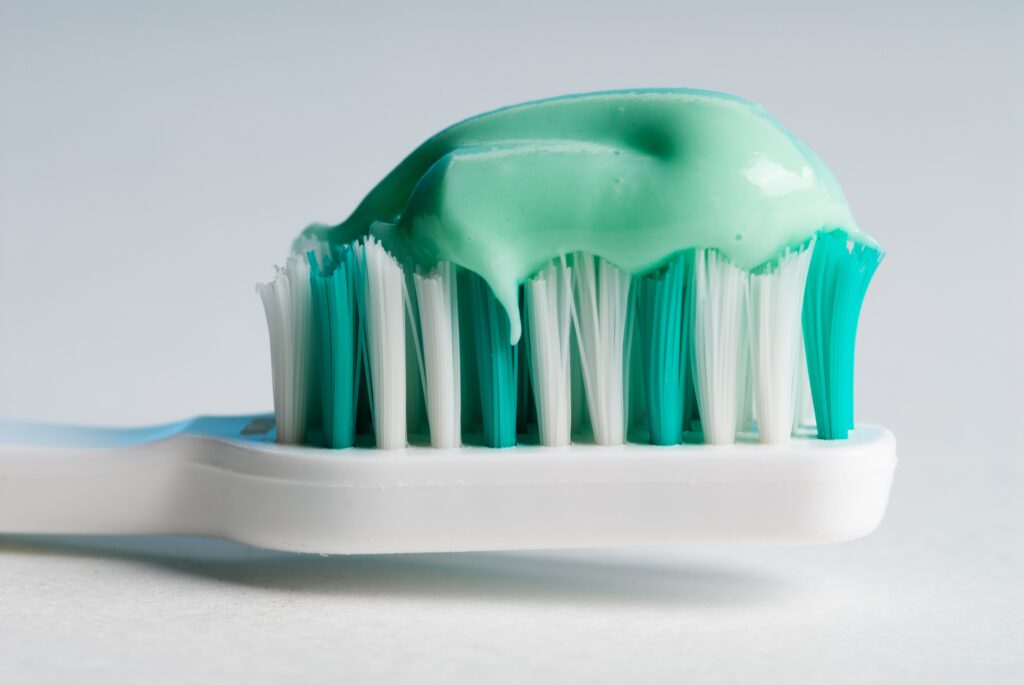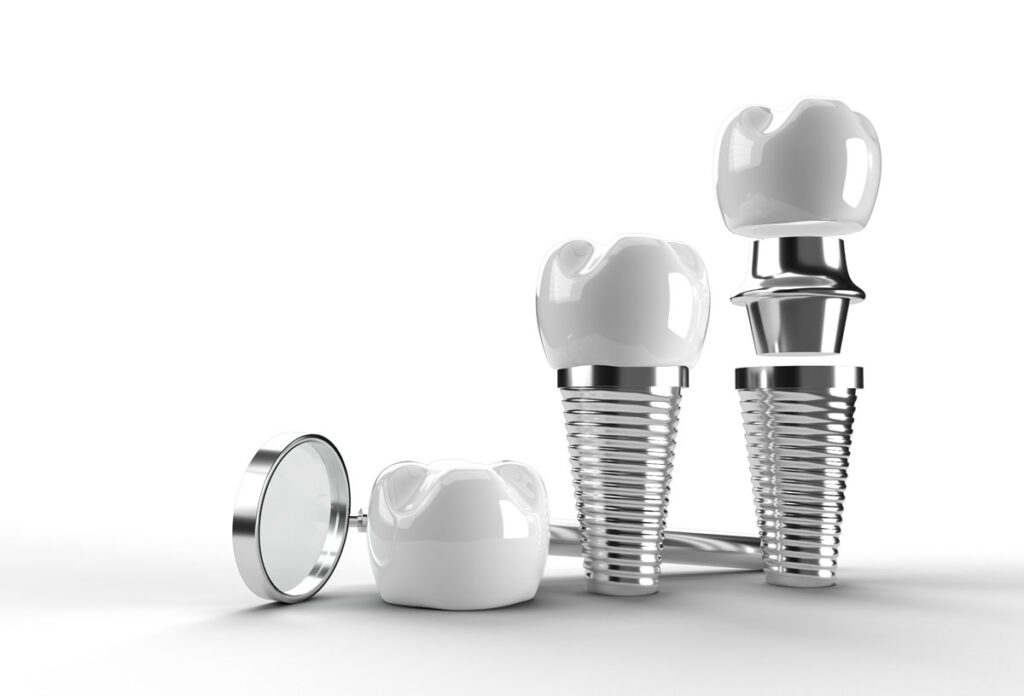When it comes to your oral health, it can be challenging to understand which doctors you visit for which procedures. While you might go to your usual dentist for cleanings, dental crowns, and other routine procedures, some dental work requires a specialist’s care, such as an orthodontist.
Most commonly when you think of an orthodontist, you think of braces. That is part of what they do, but they also perform many other treatments such as jaw repositioning and those that help fix issues caused by thumb sucking.
Use this guide to learn more about what types of procedures orthodontists do and when you might need to visit them. We’ll answer questions like “what does an orthodontist do?”, explain the difference between a dentist and an orthodontist, and how to save money on orthodontic care.
- What Does an Orthodontist Do?
- Orthodontists vs. Dentists
- When Should You See an Orthodontist?
- What Should You Expect When You Visit the Orthodontist?
- How to Find a Good Orthodontist
- How to Save at the Orthodontist
What Does an Orthodontist Do?
Believe it or not, an orthodontist’s job is not merely cosmetic. Work performed by orthodontists is very practical, improving the quality of life for many patients and preventing more severe problems in the future by fixing dental irregularities early on.
What is an orthodontist? There are two aspects that define an orthodontist: which conditions they treat and which procedures they perform. According to the American Association of Orthodontics, orthodontists are doctors who “diagnose, prevent, intercept and treat dental and facial irregularities”.

Orthodontists perform procedures to fix conditions such as:
- Overbites
- Underbites
- Overcrowding
- Crossbites
- Open bites
- Large gaps between teeth
- TMJ disorders
- Misalignment cause by thumb sucking or bottles
Some of the most common treatments orthodontists provide include:
- Braces (traditional metal braces, lingual braces, etc.)
- Clear aligners (such as Invisalign®)
- Retainers
- Palatal expanders
- Splints for jaw realignment
Orthodontists vs. Dentists
Orthodontists and dentists both help care for your oral health, but that’s where the similarities between their roles end. Here are some of the most notable ways in which orthodontists and dentists differ:
- Focus: While dentists take care of general oral health concerns related to the teeth and gums like decay, damage, and cosmetic concerns, orthodontists specialize in dealing with malocclusion—the positioning of your teeth and jaws.
- Types of treatments: Dentists perform procedures usually referred to as general dentistry—like crowns, dentures, extractions, and root canals—as well as some cosmetic dentistry treatments like dental bonding and teeth whitening. According to Colgate, orthodontists perform procedures that are designed to improve the alignment of your teeth and jaws such as braces, jaw realignment, and palatal expansion.
- Education/training: Both disciplines require a bachelor’s degree and 4 years of dental school. Since orthodontics is a dental specialty, the final two years will be focused on training in this discipline. Following school, dentists and orthodontists both take examinations and participate in residency programs before practicing independently. Orthodontists must also be certified through the U.S. National Board of Orthodontics, which allows orthodontists to practice in the U.S. and requires orthodontists to stay up-to-date with the newest developments in their dental field.
Orthodontists and dentists can work together to help you achieve a healthy smile you can feel confident in.
When Should You See an Orthodontist?
If you’re having issues due to the positioning of your teeth—such as speech impairment, discomfort, etc.—or are unhappy with the alignment of your smile, you will likely need to see an orthodontist. Typically, you will first visit your primary dentist, who will perform an exam and make a professional recommendation based on the state of your oral health and the problem you’d like to address. Your dentist would then refer you to an orthodontist if they were the proper specialist to provide the type of treatment you’re seeking.

What Should You Expect When You Visit the Orthodontist?
First, you will have a consultation with the orthodontist about your treatment goals. At this point, they can answer any questions you might have about treatment options, your condition, etc. During the consultation, they’ll also review your medical and dental history and perform an examination which will likely include X-rays and creating a mold, or impression, of your bite. The mold is then used to create your orthodontic appliances that fit comfortably and securely in your mouth. Once you’ve come to an agreement about your treatment plan, you’ll arrange payment and they’ll begin the process.
If you’re getting braces, they will apply the wires and brackets to the front of your teeth using a dental adhesive during your first appointment. Orthodontic treatments usually take several months or even years to complete, so your orthodontist will schedule future visits to make adjustments to your braces as needed and ensure you’re following their recommendations.
Once your teeth have shifted into their final positions, your orthodontist will prescribe a retainer, which will help keep your teeth in place. Usually, the retainer is worn everyday at first, but over time can be worn less frequently. You may still require occasional follow up appointments, depending on your treatment.
How to Find a Good Orthodontist
Choosing an orthodontist isn’t a decision that should be made lightly. As with any other healthcare provider, you want to make sure they are trustworthy and good at what they do. Here are some things you should do when researching orthodontists, so you can find someone who’s skilled and a good fit:
- Ask for recommendations from friends or family
- Read online reviews
- Make sure they’re covered by your insurance
- Check out their website and see if they have any certifications, special designations, or awards
Taking your time to research your orthodontist beforehand can provide you with the peace of mind that you’re in good hands.
Keep in mind that after your first visit for your consultation, you could also decide you’re not comfortable with them and find another orthodontist.
How to Save at the Orthodontist
Braces cost a lot of money, which deters people from getting them, even when they really need them. Adult braces can be especially expensive, and many dental plans do not help with braces past the age of 17 or 18.
Even if you have insurance, your orthodontic care might not be covered—especially if your oral health isn’t affected by what you’re trying to fix. As with cosmetic dentistry treatments, braces for the sake of aesthetics are usually not covered by insurance.
Fortunately, there are other ways you can save on braces costs, including:
- Payment plans: In some cases, your orthodontist may be willing to work with you and set up a payment plan. If you can’t afford your orthodontic treatment upfront, ask your doctor if there’s a way to split up payments over several months.
- Discounted treatments: You may be able to undergo treatment for a fraction of the price at a local dental school. Find out whether there is an orthodontic program and if they offer reduced cost services as part of their training.
- Low income programs: There are a variety of programs designed to help low income families qualify for orthodontic treatments. Research programs like the American Association of Orthodontists’ Donated Dental Services to find out if you or your child qualifies.
- Dental savings plans: A dental savings plan is a membership that gives you access to exclusive savings for dental treatments.
- 1Dental savings plans include savings on orthodontia for both children and adults, including braces.
1Dental Dental Savings Plans
1Dental savings plans allow you to save significantly on your orthodontic treatment, whether it be for oral health or cosmetic reasons. For orthodontic treatment, we recommend either our Dental Access® plan powered by the Aetna Dental Access Network® or our Preferred Plan, which can help you save the most with specialists. With the Dental Access plan, you can save 15-50% at specialists and you can save even more with the Preferred Plan. 1Dental dental savings plans are accepted by thousands of providers across the country and have no maximums or deductibles.
Whether or not you have dental insurance, you can benefit from one of our dental savings plans. You can combine your dental savings plan with your insurance for even lower orthodontic treatment costs.
Get the Orthodontic Treatment You Need
Now that we’ve answered “what does an orthodontist do?” and “what’s the difference between a dentist and orthodontist?”, you likely have a better idea if an orthodontist is the best practitioner to help you with your dental concerns. For many people, fear, uncertainty, and financial limitations stand in the way of them seeking the orthodontic treatments they need. But as you can see, there’s no reason to put off braces or other orthodontic treatments. Orthodontists are extensively trained in their field, can easily be vetted, and can be affordable with the right savings strategy.
Sign up for a dental savings plan and find an orthodontist in our provider network, so you can get the care you need at a fraction of the cost.
Resources:






